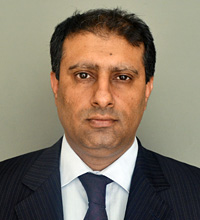Most businesses are cash guzzlers. They have liquidity cycles which usually define the remuneration structure — the way a family spends and lives its life.
And families managing such businesses usually funnel all liquidity into them. After all, the business needs it (which to most family business owners takes precedence over other needs), and the return on investments from these high-growth businesses beats any investment product out there in the market. And whatever liquidity is there in personal hands, the business owner can lean on the CFO of the business to assist him or her with managing the personal wealth.
Result? Families managing growth ventures don’t develop a considered approach or competencies in managing excess liquidity.
What happens when these families exit from a business? Well, there is sudden and unprecedented liquidity — and if there is no other business that can suck in this liquidity, the family is left grappling with the nature of this beast. The lack of a considered approach in managing liquidity can, and quite often does, prove dangerous.
To illustrate this let us look at two cases of families that had an exit from the family business.
Case 1
Mr. A and his brother (Generation 1) founded and ran a business successfully for more than 35 years. From the start, they focused on quality and branding. As a result, their brand became a household name.
The elder brother had a son and a daughter, and the younger had two sons. The children all took degrees from some of the best colleges in the world. Post that, the three boys joined the business. As per the cultural norms, the daughter was not included in the business succession. The three male cousins (Generation 2) started running the businesses under the guidance of Generation 1.
The cousins expanded the business into new products to take advantage of their distribution capabilities and thereby increased the profits multifold. After some time, Generation 1 took retirement from active business.
Then, a multinational company (MNC) made an unsolicited bid to acquire the business. At first the family resisted, especially because the founders didn’t want to sell. Eventually, because of the very high valuation at which the MNC was buying the business, the family decided to sell.
The two founding brothers left it to their children to decide how they wanted to utilize the liquidity generated. The cousins utilized the money, among others, in the following avenues. While they have pursued some ventures jointly, each person in Generation 2 has been operating independently.
- They purchased high value cars which were 4x the amount they had spent on cars earlier.
- The two sons of the younger brother got together and bid heavily for a sports team in the UK. They won the bid and ran the team for one year. However, due to irregularities in operations, their license was cancelled and the bid money forfeited.
- The cousins started a Non Banking Financial Company (NBFC) and began lending to other corporates (primarily real estate sector). However, due to their lack of experience and a downturn in the real estate market, there have been quite a few defaults in the lending book.
- The son of the elder brother took out equity stakes in two construction projects with two developers. However, both projects have failed to elicit interests from home-owners.
- They invested in multiple start-ups, most of which have, however, failed to take off.
- Simultaneously, another smaller consumer goods family business, which had been doing reasonably well, has been starved of funds and has plateaued.
In interviews with the family, all the cousins said, in hindsight, that they had made mistakes and lost money. The key thing they identified was that when there was a company under them, all the ideas they had were implemented by a team of professionals working in the company. However, after the sale, the super-structure disappeared, but they continued to operate in the same style as earlier by focusing on ideation rather than implementation.
Case 2
Mr. D is part of a family which owned a very large and well recognized brand of foodstuffs. The iconic brands were founded by the grandfather of Mr. D. However, Mr. D and other members of G3 decided to part ways and, as a result, decided to sell off the company and the brands. This resulted in a huge cash flow for the whole family. However, Mr. D, instead of enjoying all the liquidity at his disposal took two atypical steps:
- He set up a family office to manage the liquidity.
- He used his own funds to do a leveraged buy-out of another 30-year-old business.
In an interview, Mr. D’s son shared some interesting insights on why his father took these unusual steps:
- The primary reason was that he felt the old business provided a glue that held the family together. “…Generally, business families feel that it is they who keep the business running successfully with their entrepreneurial energies and foresight.”
“…Father felt that we were known very closely as the family that owned X business.” The pride that their ownership of a valued brand and business imparted was important for the whole family and its togetherness. Conversely, the sale of the old business also found its root in the issues between family members.
- The secondary reason, which was the main reason to establish a family office, was that this unearned wealth was intended for the future generation. Its use should be for times of need or for funding new businesses. The current family should not use the wealth to fund its lifestyle.
Both these cases demonstrate that liquidity events, be they through partial or full exits, need to be planned for carefully.
Suggestions and Observations
Based on the contrasting experiences of these families, the following practices may be considered:
- The family should have an internal dialogue on the liquidity generated, even if there is a strong family head. The presence of a strong family head will, for the time s/he is there, ensure that liquidity doesn’t change lifestyles. The absence of a dialogue is likely to lead only to a postponement of such aspirations.
- The dialogue should address the key question that the liquidity event is a once-in-a-lifetime event and should not lead to a substantial change in lifestyle of the family.
- The business was a running entity which would keep yielding regular profits while the capital value remained intact or grew over time. Family’s liquidity management should also generate income to maintain lifestyle while the capital received grows over time. This is essential because:
- Inflation will mean that the money required to meet lifestyle needs 10 years down the line is greater.
- Increase in the size of the family may increase the budgetary requirement.
- Utilization of capital to start new businesses will eat into the capital.
- Family members usually consider employment in the business as the first calling. If the business has been sold to another strategic investor, the family members already in the family business may suddenly find themselves out of a job. In the absence of another business of commensurate size, what are these ex-employees going to do? For most it is very difficult to make the switch to being just another employee instead of an owner. A positive outcome may be that it spurs next generations to propose new ventures. To encourage this entrepreneurship, processes need to be in place to evaluate proposals and assist family members with the initial set-ups. Another related question is about the capital structure. For example, whether such entrepreneurial members will be given individual sweat equity or will the family be the sole equity holder? Another important question, often not discussed, is what happens when a new venture fails? How does it affect the family and the person concerned?
- The family business is usually a binding agent and a social agency of recognition as one family. When the business is there, family members working in the business relate to each other through their roles and functions. In the absence of such an area of common interest, it is highly likely that the family may fragment. As happened with Case 2, a typical response may be to bind them through another business. However, that old business was an existing default state in which most family members accepted the roles they took when they joined. A similar situation may be harder to achieve in the new business and can also lead to the formation of cliques. The family members need to discuss if they are agreeable to a fragmentation and following individualistic business models and lifestyles. (It is worth noting that multiple variations exist across the spectrum between the two extremes.)
In this light, one of the first steps taken by the patriarch in Case 2 – formation of a family office — assumes significance. The family office can be the repository of wealth, the implementer of policies, the sanctioning authority, the project coordinator et al, customized and formed to the needs of the family concerned.
NB: The above is not an exhaustive list or set of responses.
About the contributor
 Ashvini Chopra is senior vice president, family office, at Bennet Coleman, in Mumbai, India. He has more than 23 years of experience — six years have been as an estate planning professional and more than seven years as a private banker. His focus areas are succession planning, tax planning, wealth management, lifestyle management, entity management (for investment companies and charity trusts) and advising on board constitutions. A member of FFI and STEP, Ashvini can be reached at ashvinichopra@gmail.com.
Ashvini Chopra is senior vice president, family office, at Bennet Coleman, in Mumbai, India. He has more than 23 years of experience — six years have been as an estate planning professional and more than seven years as a private banker. His focus areas are succession planning, tax planning, wealth management, lifestyle management, entity management (for investment companies and charity trusts) and advising on board constitutions. A member of FFI and STEP, Ashvini can be reached at ashvinichopra@gmail.com.





